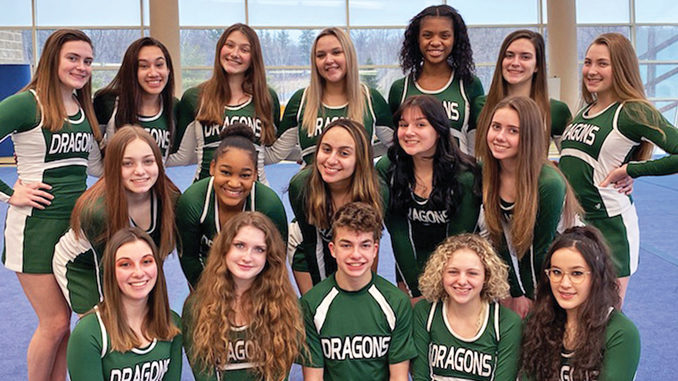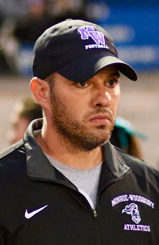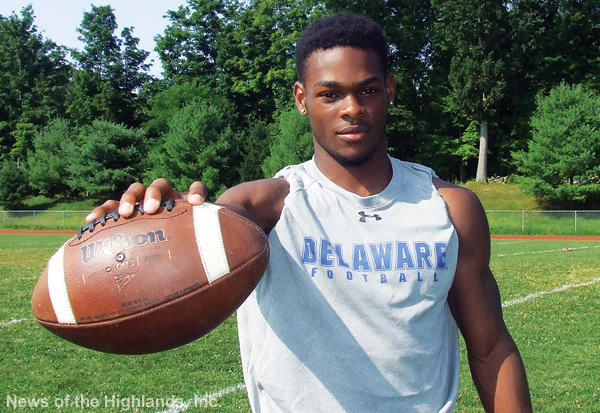
When Susan Barringer took over as the cheerleading coach this year, she fully expected it to be a rebuild season. Of the 14 students on the roster last year, 11 of them were seniors.
Heading into a new season, the three remaining veterans were joined by 14 other individuals and won the Section 9 Co-Ed Division Championship on Feb. 22. It was the first Section 9 title the cheerleading team had won in the school’s history. The team will be vying for a state title on Saturday.
“I’m really excited about it,” Barringer said of their first title. “As a new coach for the district, it was nice to bring them to their first sectional championship and now their first state run.”
Unlike other sports which have a beginning and end, cheerleading is broken up into two separate seasons.
The first starts in August and ends with the last football game of the year. Other than cheer at football games, the squad focuses on technique and stunts. Barringer said this was the first year the team was allowed to do stunts, like extensions, basket tosses, and inversions, at the games.
The second half of the season ends the first week in March and entails a lot of conditioning, stunting, and tumbling. The team focuses on learning one routine and spends the winter fine tuning their performance.
Over the course of the season, the team practices five days a week for two to two-and-a-half hours each day. Practices are spent rehearsing the routine, or re-working it if members are absent or unable to compete.
“Cheerleading isn’t like any other sport,” Barringer said. “If you’re missing one person, you have to rework the entire thing. At sectionals we had two kids come down with the flu, one on Thursday and one the day before. We also had one out with an injury and another wasn’t able to compete that weekend. They reworked the routine with 13 kids instead of 17.”
In preparation for sectionals, the team performs in six competitions where they are judged and given a score based on the execution of stunts, stunt difficulty, tumbling, cheer, jumps, and overall effect of the routine.
“They’re [the judges] very particular about how certain things have to be done,” Barringer said. “For instance if our jumps aren’t high enough and our kids aren’t rotating their legs enough, they get a lower score.”
Although the judges don’t offer feedback, Barringer said areas of improvement are based on that day’s score. She said there’s also a rubric she follows in order to increase the difficulty of the routine.
Barringer said she constantly tweaked the team’s routine, based on performance in competitions and who was available on any given day. She said it’s important to make sure the stunts are safe and the kids are in the right spots.
Heading into this weekend’s competition, Barringer said she like’s the team’s chances, but also understands it will be a good experience for the kids.
“They have worked ridiculously hard this season to overcome so many challenges. They are fighters in so many ways; no matter how they place at states, they have already won in my eyes.”
The state meet will be held at the Rochester Institute of Technology. Competing in the co-ed division, Cornwall will be facing 12 to 16 other teams.



